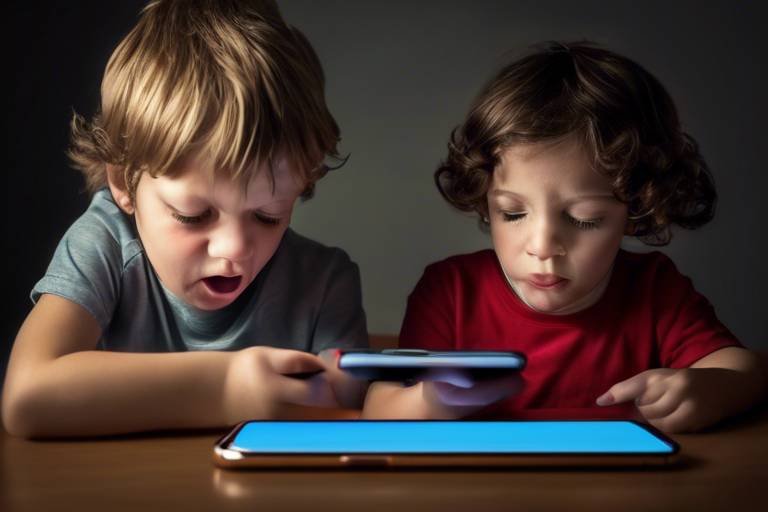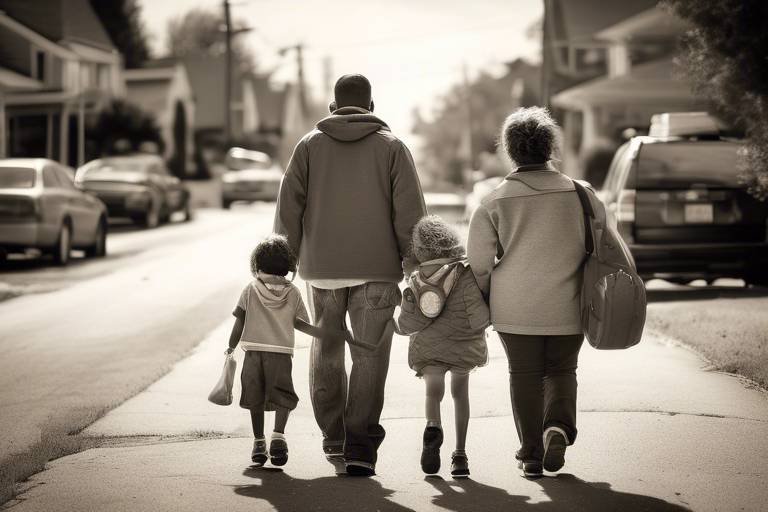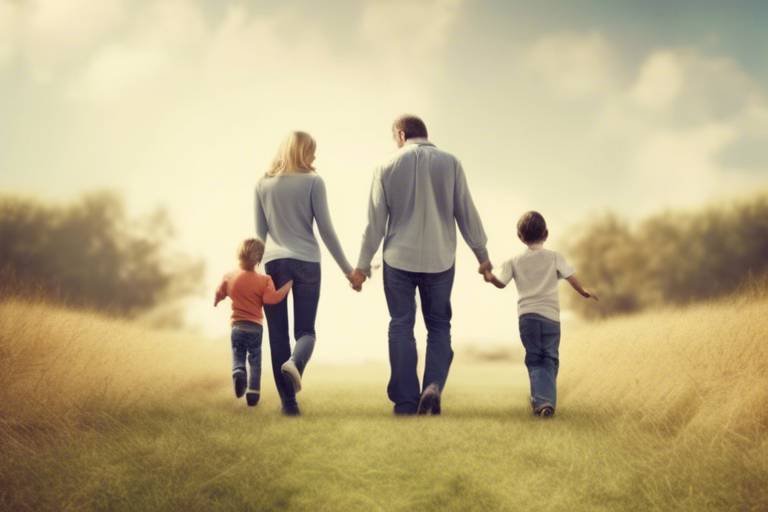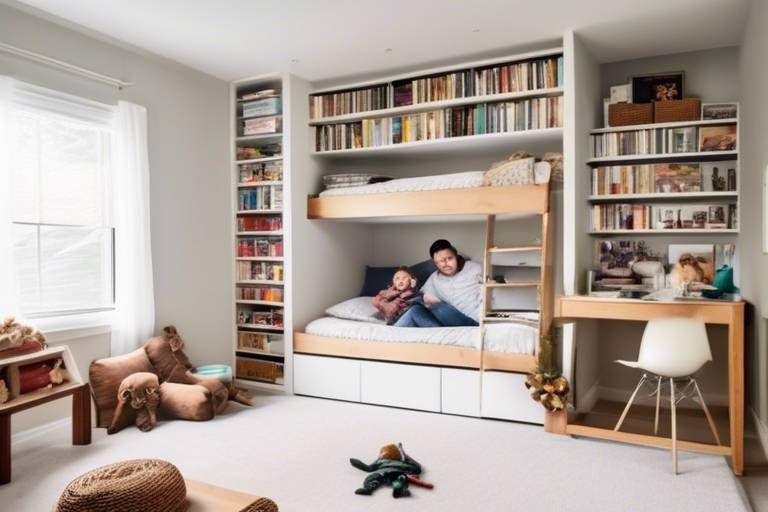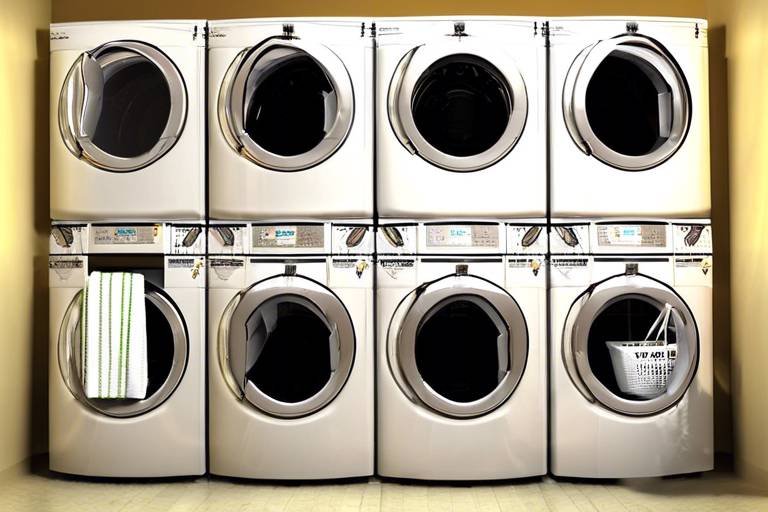Less Clutter, Less Stress: The Key to Peaceful Living
In today’s fast-paced world, we often find ourselves surrounded by an overwhelming amount of stuff. It’s as if our belongings have taken over our lives, creating a chaotic environment that can lead to stress and anxiety. Have you ever walked into a cluttered room and felt an immediate sense of unease? That’s the psychological impact of clutter at play. The truth is, less clutter can lead to significantly less stress, paving the way for a more peaceful and fulfilling life. By embracing the idea of minimalism and simplifying our surroundings, we can reclaim our mental space and enhance our overall well-being.
Clutter doesn’t just take up physical space; it invades our mental space too. Studies have shown that a disorganized environment can lead to increased levels of anxiety and stress. When our surroundings are cluttered, our brains are constantly bombarded with visual distractions, making it difficult to focus. This can create a sense of chaos, leading to feelings of being overwhelmed. Imagine trying to concentrate on a task while surrounded by piles of unfiled paperwork or stacks of clothes. It’s no wonder that many people feel mentally drained in cluttered spaces. Understanding the psychological effects of clutter is the first step toward creating a more serene environment. By recognizing how our surroundings affect our mental health, we can take proactive steps to declutter our lives and reduce stress.
Adopting a minimalist lifestyle is not just about having fewer things; it’s about making room for what truly matters. When we simplify our possessions, we create a sense of clarity and focus. This can lead to reduced stress levels and a greater appreciation for the things we choose to keep. Imagine walking into a room that is clean, organized, and free from distractions. The air feels lighter, and your mind feels clearer. Minimalism encourages us to prioritize our relationships, experiences, and personal growth over material possessions. It’s about finding joy in simplicity and letting go of the excess that weighs us down.
Decluttering is not just a physical process; it’s an emotional one as well. When we let go of items that no longer serve us, we also release emotional burdens that can hold us back. This journey of decluttering can lead to profound personal growth and emotional well-being. Think of it as shedding layers of an onion; each layer represents a piece of emotional baggage that you can release. As you declutter, you may find that you’re not just clearing space in your home but also clearing space in your heart and mind.
One of the biggest challenges in decluttering is recognizing our emotional attachments to possessions. We often hold onto items because they remind us of a person, place, or time in our lives. However, it’s essential to differentiate between sentimental value and clutter. To help identify these attachments, consider asking yourself the following questions:
- Does this item bring me joy?
- Have I used this in the past year?
- Does it serve a purpose in my life now?
By honestly evaluating your belongings, you can make more informed decisions about what to keep and what to let go of.
Having a structured decluttering plan can make the process much more manageable. Start by setting realistic goals and breaking down the task into smaller, achievable steps. Here’s a simple outline to help you get started:
- Choose a room or area to focus on.
- Set a timer for 15-30 minutes and work on decluttering during that time.
- Sort items into categories: keep, donate, recycle, and discard.
- Find a home for the items you decide to keep.
- Schedule regular decluttering sessions to maintain your space.
This structured approach can help you stay focused and make the decluttering process feel less overwhelming.
The state of our physical surroundings directly influences our stress levels. A tidy environment fosters relaxation and productivity, while a cluttered space can lead to distraction and anxiety. When our homes are organized, we create a sanctuary that promotes peace and calm. Think of your home as a reflection of your mind; a clutter-free space can lead to a clutter-free mind. By taking the time to create an organized environment, we set the stage for a more peaceful and fulfilling life.
Implementing practical tips can make decluttering less overwhelming. Here are some actionable strategies to help you start your decluttering journey effectively:
- Start small: Tackle one drawer or shelf at a time.
- Use the one-in, one-out rule: For every new item you bring in, let go of one.
- Set aside a donation box: Make it a habit to add items you no longer need.
By incorporating these habits into your daily routine, you can maintain a clutter-free space and promote a peaceful living environment.
Incorporating daily habits can significantly help maintain a clutter-free space. Simple routines, such as tidying up for 10 minutes at the end of each day, can make a big difference. This small commitment prevents clutter from building up and keeps your environment serene. Additionally, consider designating specific areas for items to ensure everything has its place, making it easier to stay organized.
Utilizing organizational tools can streamline the decluttering process. From storage bins to shelving units, the right tools can help you maintain order and simplicity. Consider investing in:
- Clear storage boxes for visibility and easy access.
- Drawer organizers to keep small items sorted.
- Labeling systems to quickly identify contents.
These techniques can aid in creating a functional and clutter-free environment.
1. How do I start decluttering my home?
Begin by choosing one area to focus on, set a timer, and sort items into categories: keep, donate, recycle, and discard. Take it one step at a time!
2. What if I feel emotionally attached to my belongings?
It’s normal to feel attached. Ask yourself if the item brings you joy or serves a purpose in your life now. If not, it might be time to let it go.
3. How can I maintain a clutter-free space?
Incorporate daily decluttering habits, such as tidying for a few minutes each day and using the one-in, one-out rule for new items.
4. Are there any specific tools that can help with decluttering?
Yes! Clear storage bins, drawer organizers, and labeling systems can significantly aid in maintaining organization.

The Psychological Impact of Clutter
Have you ever walked into a room overflowing with stuff and felt an immediate sense of unease? Clutter can have a profound effect on our mental health, often leading to increased anxiety and stress levels. It’s not just about the physical space; it’s about how that space makes us feel. When our surroundings are chaotic, our minds tend to mirror that chaos. It’s like trying to find calm in the eye of a storm—difficult, isn’t it?
Research has shown that clutter can trigger feelings of overwhelm and helplessness. When we look around and see things that need to be organized, cleaned, or thrown away, it can feel like an insurmountable task. This sense of being overwhelmed can lead to procrastination, which only adds to the clutter—and the cycle continues. It’s a bit like trying to swim in a pool filled with too many floaties; you just can’t get anywhere!
Moreover, the psychological burden of clutter can manifest in various ways. For example, a cluttered home may lead to:
- Increased Stress: The sight of disorganization can create a constant state of low-level stress.
- Difficulty Concentrating: A cluttered environment can distract you, making it hard to focus on tasks.
- Feelings of Guilt: You might feel guilty for not keeping your space tidy, which can further affect your mood.
Understanding the psychological effects of clutter is the first step toward creating a more serene environment. When we acknowledge the mental weight that clutter carries, we can begin to take action. It’s about more than just tidying up; it’s about reclaiming our peace of mind. Think of decluttering as a form of self-care. Just as we would schedule time for a spa day or a workout, we should carve out moments to care for our living spaces.
Imagine walking into a room that feels open and inviting rather than cramped and chaotic. The air feels lighter, your mind feels clearer, and you might even find yourself smiling without realizing it. This transformation is not just about aesthetics; it’s about creating a sanctuary that allows us to thrive mentally and emotionally.
In conclusion, the impact of clutter on our mental health is significant and often underestimated. By acknowledging these effects and taking steps to declutter, we can pave the way for a more peaceful and fulfilling life. Remember, a tidy space often leads to a tidy mind!
Q: How does clutter affect my mood?
A: Clutter can create feelings of overwhelm and anxiety, making it challenging to focus and relax.
Q: Can decluttering really improve my mental health?
A: Yes! Reducing clutter can lead to a more peaceful environment, which can positively impact your mental well-being.
Q: What are some quick tips for starting to declutter?
A: Start small by tackling one area at a time, set a timer for 15 minutes, and focus on keeping only what you truly need or love.

Benefits of a Minimalist Lifestyle
Embracing a minimalist lifestyle can be a transformative experience, leading to a myriad of benefits that extend beyond just having a neat and tidy space. Imagine walking into your home and feeling an instant sense of calm wash over you. This isn’t just a dream; it can be your reality when you choose to simplify your life. By reducing the number of possessions you own, you create an environment that is not only visually appealing but also mentally liberating. The less clutter you have, the less your mind has to work to process it all, which can significantly lower your stress levels.
One of the key advantages of minimalism is the enhanced clarity it brings. When you strip away the excess, you are left with only what truly matters. This clarity can lead to improved decision-making and increased focus on your personal goals. Think about it: how often do you feel overwhelmed by choices? With fewer items to manage, you can concentrate on what truly enriches your life. This newfound focus can lead to greater productivity and creativity, allowing you to pursue passions that may have been overshadowed by the chaos of clutter.
Moreover, minimalism encourages a sense of financial freedom. When you prioritize experiences over possessions, you may find yourself spending less on material goods and more on activities that bring joy and fulfillment. This shift in mindset can alleviate financial stress and promote a more sustainable lifestyle. Instead of accumulating things that require maintenance and care, you can invest in experiences that foster personal growth and connection with others.
Additionally, minimalism has profound emotional benefits. As you declutter your space, you may also find that you’re decluttering your mind. Letting go of physical items that no longer serve you can lead to a sense of emotional release. It’s like shedding a heavy coat that you’ve been wearing for years—once it’s gone, you feel lighter and freer. This emotional freedom can encourage personal growth and greater self-awareness, allowing you to focus on what truly matters in your life.
In essence, adopting a minimalist lifestyle can be a gateway to a more fulfilling existence. Here are some key benefits summarized:
- Reduced Stress: A clutter-free environment fosters relaxation.
- Increased Clarity: Fewer possessions lead to improved focus and decision-making.
- Financial Freedom: Spending less on material goods allows for more meaningful experiences.
- Emotional Well-being: Letting go of excess can lead to personal growth.
Ultimately, the journey towards minimalism is not just about getting rid of things; it's about redefining your relationship with your possessions and understanding what truly adds value to your life. As you embark on this journey, remember that each step you take towards minimalism is a step towards a more peaceful and fulfilling life.
Q: What does it mean to live a minimalist lifestyle?
A: Living a minimalist lifestyle means prioritizing experiences and meaningful possessions over material goods. It involves decluttering your space and mind to focus on what truly matters.
Q: Can minimalism help reduce stress?
A: Yes! A clutter-free environment can significantly reduce stress levels, making it easier to relax and focus on important tasks.
Q: Do I have to get rid of everything to be a minimalist?
A: Not at all! Minimalism is about finding balance and keeping only what adds value to your life, so you can choose what to keep or discard.
Q: How do I start living a minimalist lifestyle?
A: Begin by decluttering one area of your home at a time. Assess your belongings and keep only what you truly need or love. Gradually, you can expand this practice to other aspects of your life.

Emotional Freedom Through Decluttering
Have you ever noticed how a cluttered space can feel like a cluttered mind? It's almost as if those old magazines and mismatched socks are weighing down your thoughts. When we hold onto things, we often don't realize the emotional baggage that comes with them. Decluttering isn't just about making room in your closet; it's about creating space in your life for growth and freedom.
Letting go of items can feel like shedding a heavy coat in the spring. The moment you release those possessions, you might find yourself breathing a little easier, feeling a little lighter. This process isn't just physical; it's deeply emotional. Each item we own can carry a story, a memory, or even a burden. By decluttering, we can liberate ourselves from the past and make room for new experiences. It's like clearing out a garden to make way for fresh blooms.
But how do you start this journey of emotional freedom? First, it’s essential to recognize the emotional attachments we have to our belongings. Some items may remind us of a loved one, while others may represent a time in our lives we’re not quite ready to let go of. Here are a few questions to ponder:
- Does this item bring me joy?
- Am I keeping this out of obligation or guilt?
- Can I find a way to honor the memory without holding onto the physical object?
Identifying these attachments is crucial. It can be incredibly freeing to realize that your memories live within you, not in the items you possess. Once you grasp this concept, the decluttering process becomes less about loss and more about liberation. You’re not just tossing things away; you’re making room for what truly matters.
Creating a structured plan can also aid in navigating this emotional journey. Start small; perhaps begin with a single drawer or a corner of a room. As you sift through your belongings, allow yourself to feel the weight of each decision. Ask yourself if the item serves a purpose or if it simply occupies space. This methodical approach not only makes the task less overwhelming but also encourages reflection on what you truly value.
In the end, decluttering is an act of self-care. It allows you to reclaim your space and, more importantly, your peace of mind. Imagine walking into a room that feels open and inviting, where every item has a purpose and a place. That sense of clarity and calm is the ultimate reward of emotional freedom through decluttering.
Q: How do I start decluttering without feeling overwhelmed?
A: Begin with a small area, like a drawer or a shelf. Set a timer for 15-30 minutes and focus solely on that space. This makes the task feel more manageable.
Q: What should I do with items I decide to let go of?
A: Consider donating, recycling, or selling items that are still in good condition. This way, you can feel good about passing them on to someone who may need them.
Q: Can decluttering really improve my mental health?
A: Absolutely! A clutter-free environment can lead to reduced stress and anxiety, allowing you to think more clearly and feel more at peace in your space.

Identifying Emotional Attachments
When it comes to decluttering, one of the most challenging aspects is recognizing our emotional attachments to certain items. It's not just about the physical space those items occupy; it's about the memories, feelings, and experiences they represent. Have you ever found yourself holding onto an old t-shirt from high school or a broken piece of furniture that belonged to a loved one? These objects can evoke powerful emotions that make it hard to let go.
To effectively declutter, we need to first understand the reasons behind our attachments. Often, these feelings stem from significant life events, relationships, or even our self-identity. For instance, a childhood toy might remind us of carefree days, while a gift from a friend can symbolize a cherished bond. Acknowledging these connections is crucial in deciding what to keep and what to release.
Here are a few strategies to help identify your emotional attachments:
- Reflect on the Story: Take a moment to think about the story behind each item. What memories does it bring up? Is it a happy memory or a painful one? Understanding the narrative can help you evaluate its importance in your current life.
- Assess the Current Value: Ask yourself if the item still holds value in your life today. Does it serve a purpose, or is it simply taking up space? If it no longer adds joy or utility, it might be time to let it go.
- Visualize Life Without It: Picture your life without the item. Would you feel a sense of loss, or would it be liberating? This mental exercise can provide clarity on whether the attachment is genuinely beneficial or simply a habit.
Moreover, consider keeping a memory box for items that hold sentimental value but don't necessarily need to occupy space in your home. This box can serve as a physical representation of cherished memories without cluttering your environment. By doing this, you can honor your past while embracing a more minimalist lifestyle.
Ultimately, identifying emotional attachments is about finding a balance between honoring your past and creating a peaceful, clutter-free present. By understanding what truly matters to you, you can make informed decisions about what to keep and what to release, paving the way for a more fulfilling and serene living space.
Q: How do I know if I have an emotional attachment to an item?
A: If you find it difficult to part with something due to memories or feelings it evokes, you likely have an emotional attachment. Reflecting on the item's significance can help clarify this.
Q: What should I do if I feel guilty about discarding sentimental items?
A: It's normal to feel guilt, but remember that letting go can also be a form of honoring those memories. Consider taking photos of the items before parting with them to preserve the memory without the physical clutter.
Q: Can I keep some sentimental items without cluttering my space?
A: Absolutely! Consider designating a specific space, like a memory box, for sentimental items. This way, you can keep the memories alive without overwhelming your living area.

Creating a Decluttering Plan
When it comes to decluttering, having a solid plan is like having a roadmap on a long journey. It guides you through the process, ensuring you don’t get lost in the chaos of your belongings. So, how do you create a decluttering plan that suits your lifestyle? First, you need to assess your space and identify the areas that require the most attention. It’s important to approach this task with a clear mind and a positive attitude, as the goal is to create a serene environment that fosters peace and productivity.
Start by breaking down your decluttering efforts into manageable steps. Instead of tackling your entire home in one go, consider focusing on one room or even a specific area within a room. For instance, you might want to start with your bedroom closet, the kitchen pantry, or that overflowing drawer in your office. By narrowing your focus, you can avoid feeling overwhelmed and make the process feel more achievable.
Next, set a timeline for your decluttering journey. This will help you stay on track and provide a sense of urgency. You could allocate a weekend for a particular room or dedicate 15 minutes each day to declutter a small space. Whatever your approach, consistency is key. Here’s a simple timeline you might consider:
| Day | Task |
|---|---|
| Day 1 | Choose a room to declutter |
| Day 2 | Sort items into 'keep', 'donate', and 'discard' categories |
| Day 3 | Organize the items you wish to keep |
| Day 4 | Take donations to a local charity |
| Day 5 | Dispose of any items that are broken or unusable |
As you create your plan, it’s essential to stay motivated. Remind yourself of the benefits of decluttering, such as improved mental clarity and reduced stress levels. You might even want to enlist a friend or family member to join you in this journey. Having a decluttering buddy can make the process more enjoyable and provide accountability.
Finally, don’t forget to establish a maintenance routine. Once you’ve decluttered your space, it’s important to keep it that way. Consider implementing daily habits, such as a quick five-minute tidy-up at the end of each day or a weekly check-in to ensure clutter doesn’t creep back in. Remember, maintaining a clutter-free environment is an ongoing process, and with a solid plan in place, you’re well on your way to a more peaceful living space.
Q: How often should I declutter my home?
A: It depends on your lifestyle, but a good rule of thumb is to do a thorough declutter at least once a year, with regular maintenance every month.
Q: What should I do with items I decide to discard?
A: You can donate usable items to local charities, sell them online, or recycle them if they are beyond repair.
Q: How can I stay motivated during the decluttering process?
A: Set small goals, reward yourself after completing tasks, and remember the benefits of a clutter-free environment.

Physical Environment and Stress Levels
The connection between our physical environment and stress levels is profound and often underestimated. Imagine walking into a room filled with clutter: clothes strewn about, stacks of papers piled high, and miscellaneous items scattered everywhere. How does that make you feel? Overwhelmed, right? This chaotic setting can trigger feelings of anxiety and distract you from focusing on what truly matters. On the other hand, a tidy and organized space can evoke a sense of calm and clarity, allowing your mind to breathe and function more efficiently.
Research shows that our surroundings can significantly influence our mood and mental state. A cluttered environment often creates a sense of chaos that can lead to increased levels of stress. When your space is disorganized, your brain is constantly bombarded with visual distractions, making it difficult to concentrate. This can lead to a cycle of procrastination and frustration, further exacerbating stress levels. Conversely, a clean and organized environment can promote feelings of peace and productivity. It’s like the difference between trying to work in a noisy café versus a quiet library; the latter allows for focus and tranquility.
Moreover, the act of decluttering itself can be therapeutic. It’s not just about getting rid of physical items; it’s also about creating a space that reflects your values and priorities. When you eliminate unnecessary items, you’re essentially making room for what truly matters in your life—be it relationships, hobbies, or personal growth. This process can lead to a profound sense of freedom and accomplishment. You might even find that as you clear out the clutter, you’re also clearing out mental fog, making way for new ideas and creativity.
To illustrate this point, consider the following table that outlines the effects of different environments on stress levels:
| Environment | Stress Level | Impact on Well-being |
|---|---|---|
| Cluttered Space | High | Increased anxiety, distraction |
| Organized Space | Low | Enhanced focus, relaxation |
| Natural Environment | Very Low | Increased happiness, calmness |
In summary, the state of your physical environment plays a crucial role in determining your stress levels. By creating a space that promotes peace and order, you can significantly enhance your mental well-being. So, the next time you find yourself feeling overwhelmed, take a moment to assess your surroundings. A little decluttering might just be the key to unlocking a more peaceful and fulfilling life.
- How does clutter affect mental health? Clutter can increase feelings of anxiety and stress, making it difficult to focus and relax.
- What are the benefits of a tidy environment? A tidy space promotes relaxation, enhances productivity, and allows for clearer thinking.
- How can I start decluttering my space? Begin by assessing your belongings, identifying what you truly need, and create a plan to gradually remove excess items.

Practical Decluttering Tips
When it comes to decluttering, the journey can often feel daunting. However, with the right mindset and a few practical tips, you can transform your space into a serene sanctuary. The first step is to set clear goals. Ask yourself what you want to achieve with your decluttering efforts. Are you looking to create more space, reduce stress, or simply make your home more functional? Once you have a clear vision, it becomes easier to stay motivated and focused.
Next, consider the concept of the “one-in, one-out” rule. This simple guideline can drastically reduce clutter over time. For every new item you bring into your home, make it a habit to remove an old one. This practice not only keeps your space tidy but also encourages mindful consumption. Think about it—do you really need that new gadget if it means saying goodbye to something you already own?
Another effective strategy is to tackle decluttering in small, manageable chunks. Instead of attempting to declutter your entire home in one day, break it down into smaller tasks. For instance, you might dedicate a weekend to your closet or even set aside 15 minutes each day to focus on a specific area. This approach not only makes the process less overwhelming but also allows you to celebrate small victories along the way. Remember, progress is progress, no matter how small.
As you declutter, be mindful of your emotional attachments to items. It’s common to hold onto things because of the memories they evoke. To help with this, try asking yourself a few key questions: “Does this item bring me joy?” or “Would I buy this again today?” If the answer is no, it might be time to let it go. This emotional check-in can serve as a powerful tool to help you make decisions about what to keep and what to release.
Additionally, consider utilizing organizational tools to streamline your decluttering process. Items like storage bins, drawer organizers, and labels can help you maintain order and simplicity in your space. For example, using clear bins allows you to see what you have at a glance, making it easier to find what you need without rummaging through piles of clutter. Here’s a simple table to illustrate some effective organizational tools:
| Organizational Tool | Benefits |
|---|---|
| Storage Bins | Keep items contained and visible |
| Drawer Organizers | Maximize space and prevent chaos |
| Labels | Help you quickly identify contents |
Finally, it’s important to establish daily decluttering habits. Incorporate simple routines into your day-to-day life to keep clutter at bay. For instance, consider implementing a nightly tidy-up where you spend just ten minutes putting things back in their designated places. This small commitment can lead to significant results over time, ensuring that your home remains a peaceful retreat rather than a cluttered chaos.
Q: How often should I declutter my home?
A: It's beneficial to declutter regularly, perhaps every few months, but daily habits can help maintain a clutter-free space.
Q: What should I do with items I want to discard?
A: Consider donating, recycling, or selling items in good condition. This way, they can find new homes instead of ending up in a landfill.
Q: Can decluttering really reduce stress?
A: Absolutely! A tidy environment can lead to a clearer mind, allowing you to focus on what truly matters in life.

Daily Decluttering Habits
In our fast-paced lives, it's all too easy for clutter to creep in and take over our spaces, both physically and mentally. However, adopting can be a game-changer in maintaining a serene environment. Think of it as a daily workout for your home—just like you wouldn't skip your exercise routine, you shouldn't skip your decluttering rituals! By dedicating just a few minutes each day to tackle clutter, you can prevent it from becoming an overwhelming burden.
One effective habit is the “One In, One Out” rule. This means that for every new item you bring into your home, you let go of an existing item. It's a simple yet powerful strategy that keeps your possessions in check. Imagine bringing home a new shirt; you can choose to donate an old one, ensuring your closet remains manageable. This not only helps in maintaining order but also encourages mindful shopping—after all, do you really need that extra pair of shoes?
Another useful habit is the “Five-Minute Tidy”. Set a timer for just five minutes and focus on one area of your home, whether it's your desk, a kitchen counter, or a corner of your living room. You’ll be amazed at how much you can accomplish in such a short time! This practice not only keeps clutter at bay but also instills a sense of accomplishment, making you feel more in control of your environment. Plus, it’s a great way to break up the monotony of your day.
Additionally, consider creating a “Clutter Box”. Designate a box for items that you want to sort through later. This can be a great way to contain clutter without letting it spread throughout your home. Just remember to schedule a time each week to go through the box and decide what to keep or discard. This way, you’re not only managing clutter but also giving yourself permission to take your time without feeling overwhelmed.
Incorporating these daily habits into your routine can lead to a more organized and peaceful living space. It’s about creating a lifestyle where less truly is more. By consistently practicing these habits, you’ll find that maintaining a clutter-free home becomes second nature, and the stress associated with a chaotic environment will diminish. So, why not start today? Your future self will thank you!
- How long does it take to see results from daily decluttering habits?
Results can vary, but many people notice a difference within a few weeks of consistent practice. - What if I feel overwhelmed by the thought of decluttering?
Start small! Focus on one area at a time and gradually increase your efforts. - Can decluttering really impact my mental health?
Absolutely! A tidy environment can lead to reduced stress and increased clarity.

Organizational Tools and Techniques
When it comes to decluttering and maintaining a peaceful living space, having the right organizational tools and techniques at your disposal can make all the difference. Imagine trying to navigate through a maze without a map—overwhelming, right? That’s exactly how it feels when you don’t have a strategy in place for organizing your belongings. By incorporating effective tools and techniques, you can transform your cluttered space into a serene sanctuary.
First off, let's talk about storage solutions. Investing in quality storage options is akin to having a reliable toolbox for a DIY project. Whether it’s clear bins, stylish baskets, or drawer organizers, having designated places for your items helps you keep everything in check. For instance, transparent bins allow you to see what’s inside without having to rummage through piles of stuff, making it easier to find what you need. Plus, they can be stacked to save space, which is a win-win!
Next up, labeling is a game changer. It’s like putting a name tag on your belongings. When everything has a label, you not only know where to find things but also where to put them back after use. This simple technique can drastically reduce the time you spend looking for items and the frustration that comes with it. You can use a label maker, or even just some colorful tape and a marker to create your own labels. The key is to make it visually appealing and easy to read.
Now, let’s dive into some techniques that can aid in your organizational journey. One popular method is the KonMari Method, developed by Marie Kondo. This technique encourages you to keep only those items that "spark joy." It’s not just about getting rid of things; it’s about surrounding yourself with items that truly resonate with you. To implement this, you can follow these steps:
- Gather all items from a specific category (like clothes or books).
- Hold each item and ask yourself if it sparks joy.
- If it does, keep it; if not, thank it for its service and let it go.
Another effective technique is the One In, One Out Rule. This simple yet powerful concept states that for every new item you bring into your home, you should let go of one existing item. It’s a fantastic way to maintain balance and prevent clutter from creeping back into your life. Think of it as a revolving door for your possessions—keeping your space fresh and manageable.
Lastly, consider leveraging digital tools for organizing your life. Apps like Trello or Todoist can help you manage tasks and keep track of projects, ensuring that your mental space is as organized as your physical space. By digitizing lists and reminders, you can declutter your mind and focus on what truly matters.
In conclusion, the right organizational tools and techniques are essential allies in the fight against clutter. By using effective storage solutions, labeling items, and adopting proven techniques like the KonMari Method and the One In, One Out Rule, you can create a more harmonious living environment. Remember, organization isn’t just about tidiness; it’s about creating a space that nurtures your well-being and enhances your quality of life.
Q: How often should I declutter my space?
A: It’s a good idea to declutter regularly—aim for at least once every few months. However, if you notice clutter building up, tackle it immediately to maintain a peaceful environment.
Q: What should I do with items I want to discard?
A: Consider donating, selling, or recycling items instead of throwing them away. This way, you can give your belongings a second life and help others in the process.
Q: Can I declutter too much?
A: Yes, it’s possible to declutter excessively. Make sure to keep items that hold value or joy for you, as the goal is to create a space that feels comfortable and personal.
Frequently Asked Questions
- What is clutter and how does it affect my mental health?
Clutter refers to the accumulation of unnecessary items that can overwhelm your living space. It can lead to increased anxiety and stress, making it hard to focus and relax. When your environment is chaotic, it often reflects in your mind, creating a cycle of stress that can be hard to break.
- How can adopting a minimalist lifestyle help reduce stress?
Embracing minimalism means simplifying your life by focusing on what truly matters. By reducing the number of possessions you own, you can create a more peaceful environment that fosters clarity and reduces distractions. This lifestyle shift promotes emotional well-being and can lead to a greater sense of fulfillment.
- What are some effective strategies for decluttering?
Start by identifying emotional attachments to your items. Ask yourself questions like, "Does this bring me joy?" or "Have I used this in the past year?" Create a decluttering plan by breaking the process into manageable steps, and tackle one area at a time to avoid feeling overwhelmed.
- How does my physical environment affect my stress levels?
Your surroundings play a significant role in your overall well-being. A tidy and organized space can promote relaxation and productivity, while clutter can heighten feelings of anxiety. By maintaining a clean environment, you can create a sanctuary that supports your mental health.
- What daily habits can I adopt to maintain a clutter-free space?
Incorporate simple routines into your daily life, such as setting aside 10 minutes each day to tidy up or implementing the "one in, one out" rule for new items. Regularly assessing your belongings and making small adjustments can help keep clutter at bay and promote a peaceful living environment.
- Are there specific organizational tools that can help with decluttering?
Yes! There are various tools available, such as storage bins, drawer organizers, and label makers, that can streamline your decluttering process. Utilizing these tools can help you maintain order and simplify your space, making it easier to find what you need when you need it.


